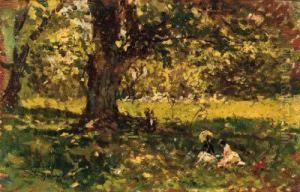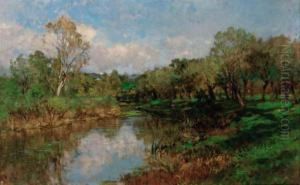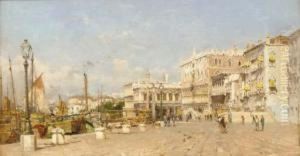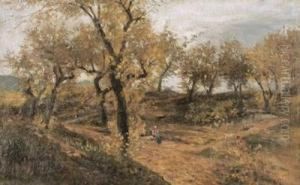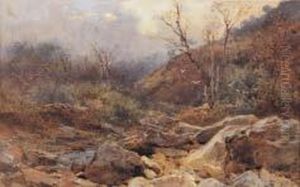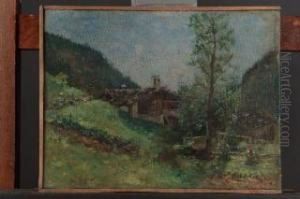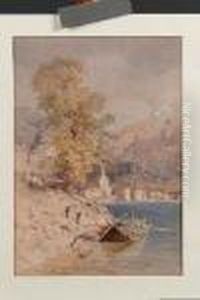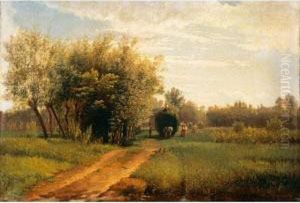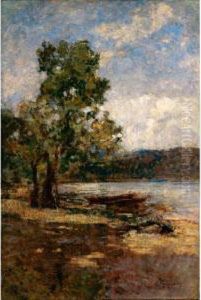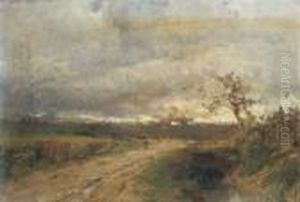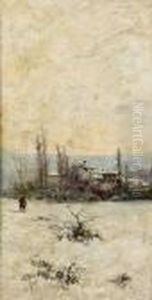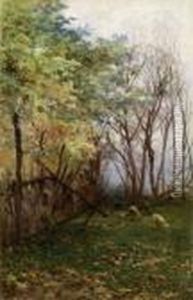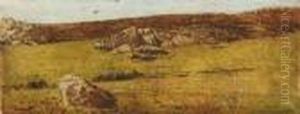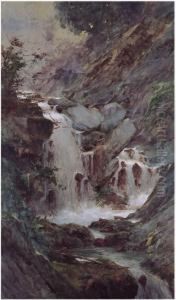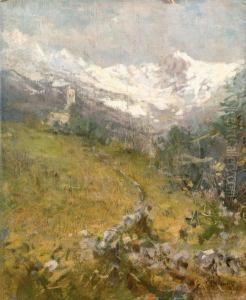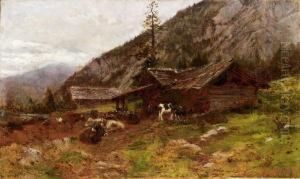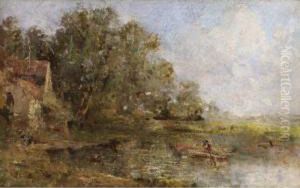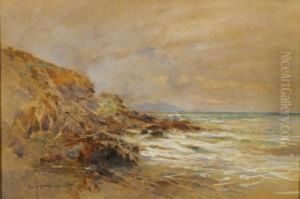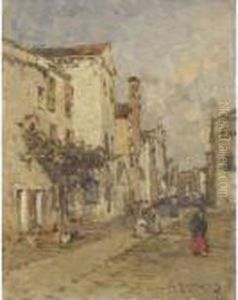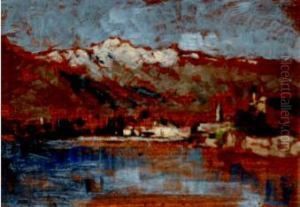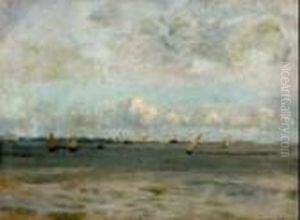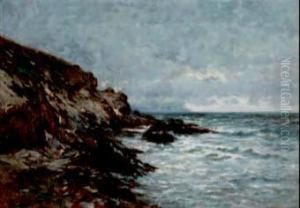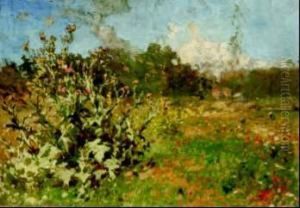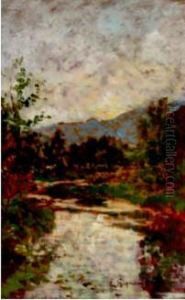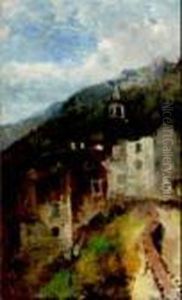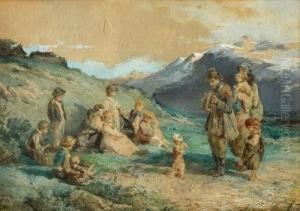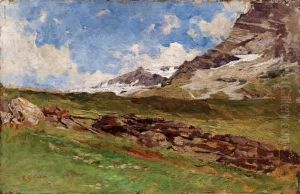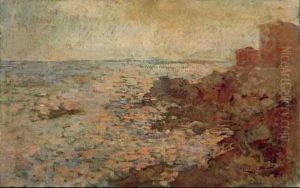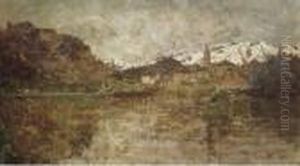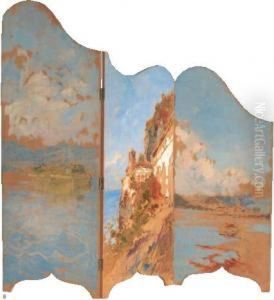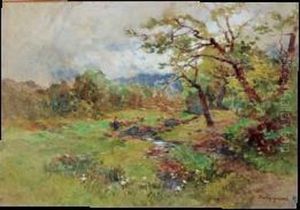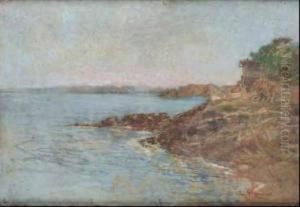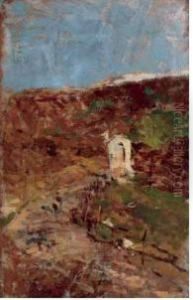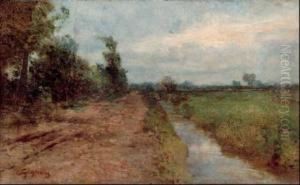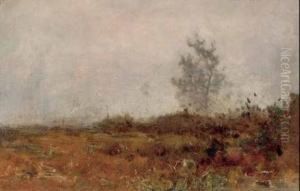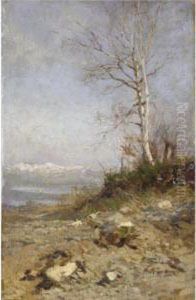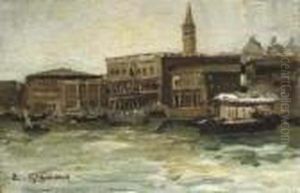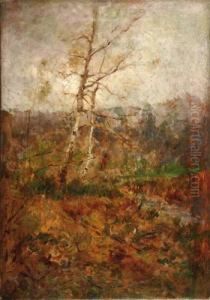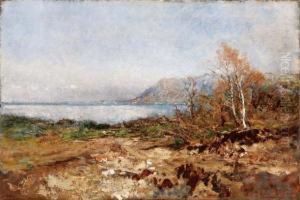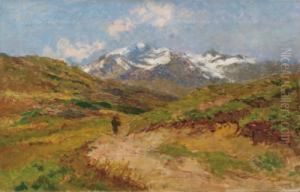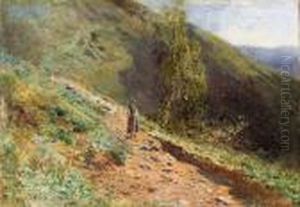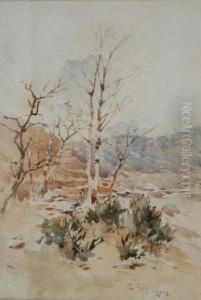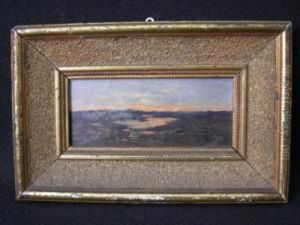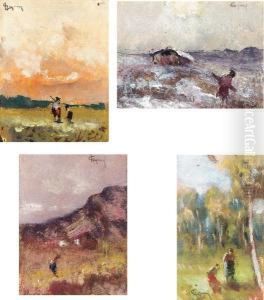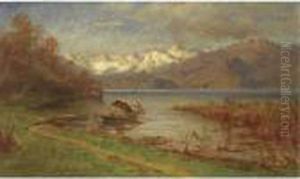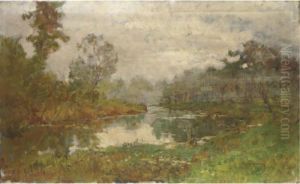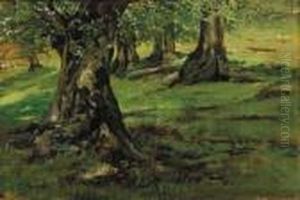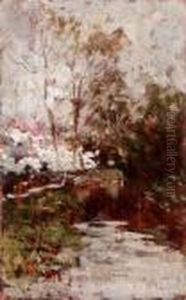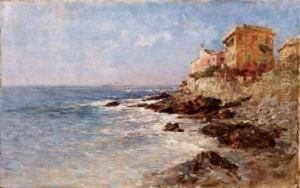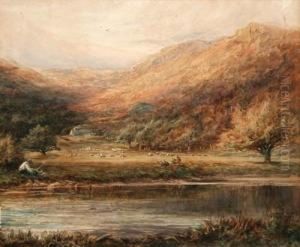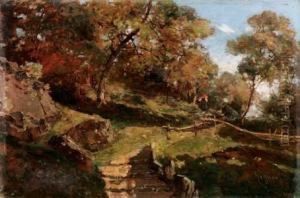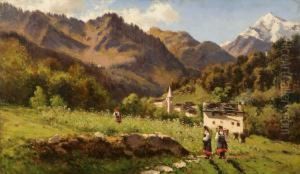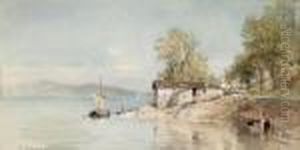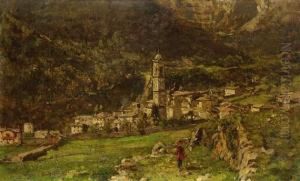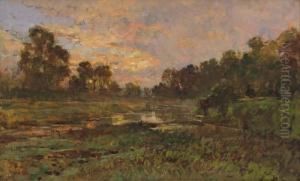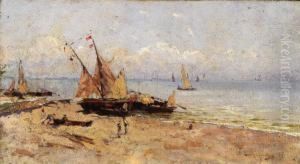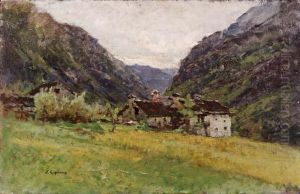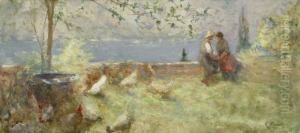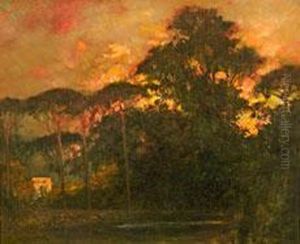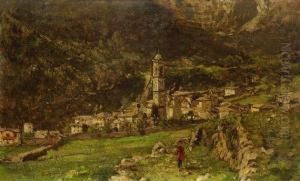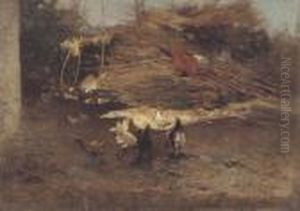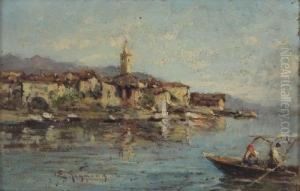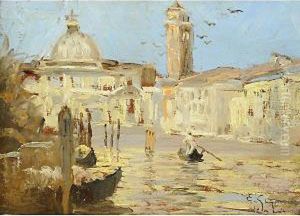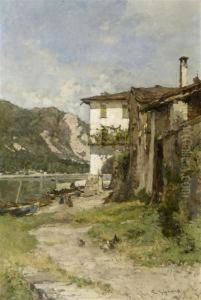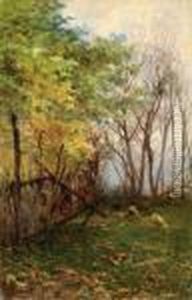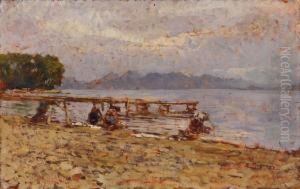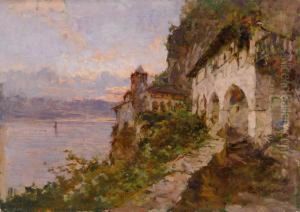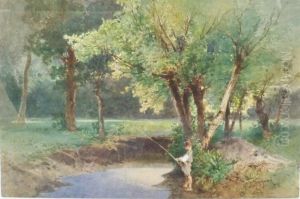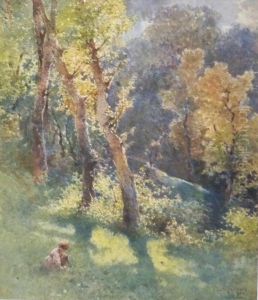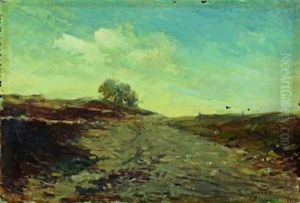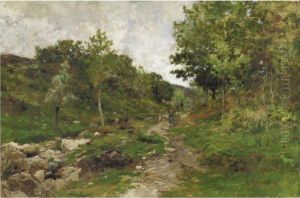Eugenio Gignous Paintings
Eugenio Gignous was an Italian painter born on August 13, 1850, in Milan, Italy. His artistic journey began under the guidance of his father, Michele Gignous, a decorator and painter, from whom Eugenio inherited his initial passion and skills in the arts. Eugenio's talent and interest in painting flourished at an early age, prompting him to pursue formal education in the field. He enrolled at the Brera Academy in Milan, where he studied under the tutelage of Giuseppe Bertini, a prominent painter and teacher who played a significant role in shaping Gignous's artistic direction. Bertini's influence steered Gignous towards landscape painting, a genre that would define his career.
Throughout the 1870s and 1880s, Eugenio Gignous established himself as a prominent figure in the Italian landscape painting scene. His works were characterized by their detailed portrayal of nature and rural life, capturing the beauty and tranquility of the Italian countryside with a particular focus on the regions of Lombardy and Piedmont. Gignous was part of the Scapigliatura movement, a group of Italian artists and intellectuals of the late 19th century who sought to shake off the constraints of traditional academic art in favor of more experimental and unconventional approaches. Despite this affiliation, Gignous's style remained relatively conservative, emphasizing realism and meticulous attention to atmospheric effects.
Gignous's contributions to Italian art were recognized and celebrated during his lifetime. He participated in numerous national and international exhibitions, earning accolades and awards that bolstered his reputation. Notably, his works were exhibited at the Brera Academy, where he once studied, and at various expositions in Turin, Milan, and Venice, among other cities. His paintings also found audiences beyond Italy, contributing to the international appreciation of Italian landscape painting of the period.
Eugenio Gignous's legacy is preserved through his paintings, which continue to be admired for their serene beauty and technical skill. He passed away on August 10, 1906, in Stresa, a town on the shores of Lake Maggiore, where he spent the latter part of his life and which often served as inspiration for his works. Gignous's dedication to capturing the essence of the Italian landscape has left a lasting mark on the art world, making him a notable figure in the history of 19th-century Italian painting.
